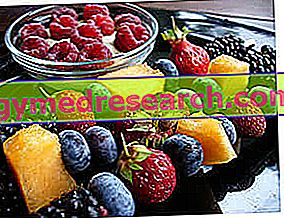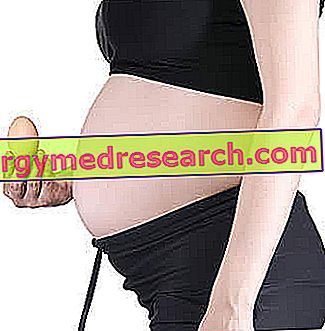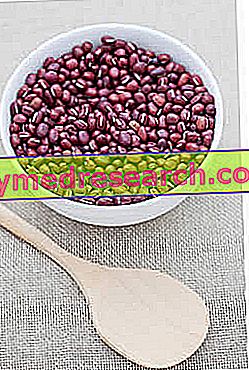The functional ingredients enclosed in antioxidant supplements are largely obtained directly (by extraction) or indirectly (by semi-synthesis) from plant species. Nature therefore represents an excellent source of antioxidant molecules, many of which are generously contained in the foods we consume every day; therefore, an adequately distributed and balanced diet, varied and optimal, reduces the need to take antioxidant supplements and is therefore the first objective to pursue.
But what exactly does "antioxidant" mean? This adjective is reserved for each molecule capable of preventing the oxidation of other molecules.

Antioxidant supplements: why can they be useful? Free radicals are also produced by the healthiest of organisms; not only that, some of these molecules play an extremely important biological role, intervening in the transmission of signals from cell to cell and participating in the organism's overall homeostasis. Problems arise precisely when free radicals are produced in excess; similar circumstances occur in the face of a high metabolic commitment (increased physical activity) or external factors, such as air pollution, ultraviolet radiation, chemical agents and stress. The excess of free radicals is responsible for important damages that compromise the functionality of cells and tissues, and is associated with numerous chronic diseases, such as cardio-circulatory disorders (atherosclerosis, ischemia, stroke), diabetes, cancer and neurodegenerative diseases (eg. Parkinson's disease, Alzheimer's disease). Furthermore, oxidative stress is one of the main causes of cellular aging.
A necessary clarification: sport, in addition to increasing the synthesis of free radicals, also strengthens the endogenous antioxidant systems that counteract them. Otherwise it would not be possible to explain why sportsmen generally seem much younger than sedentary peers.
How is the antioxidant power established? The molecules with antioxidant action - which can be taken with the diet or through targeted supplementation - are numerous and include polyphenols, vitamins, carotenoids and many other substances.
| Some of the best known antioxidants |
| Ascorbic acid (Vitamin C) |
| Lipoic acid |
| Carotenoids (precursors of Vit A, such as alpha and beta carotene, lycopene, lutein, zeaxanthin, astaxanthin) |
| Coenzyme Q10 |
| Curcumin |
| Polyphenols (resveratrol, quercetin, hesperidin, naringenin, catechins, epicatechins, epigallocatechins, daidzein, genistein, glycitein, resveratrol, anthocyanins) |
| Glutathione |
| Melatonin |
| N-acetylcysteine |
| Selenium |
| Tocotrienols and Tocopherols (VIt. E) |
These compounds are able to react with free radicals reducing their reactivity and generating less dangerous molecules that can be easily eliminated by the body. To evaluate its antioxidant efficacy it is possible to carry out investigations at various levels; the lowest is represented by in vitro studies, which try to reproduce inside a test tube what happens in the body (naturally with the necessary approximations). Having established that the substance is at least partly absorbable at the gastro-intestinal level and harmless to humans, the next level consists in evaluating the antioxidant power in vivo, for example by studying the variations of the antioxidant power of blood and saliva before or after the substance intake. In the next step the molecule is studied on animal models, testing its protective efficacy against various genetically induced diseases and conditions or through special dietary modifications. Finally we move on to clinical trials to see if even in humans the antioxidant power of the substance exerts a certain protective or therapeutic effect against certain pathologies or aesthetic conditions (eg anti-wrinkle effect).
How to evaluate the effectiveness and quality of an antioxidant supplement?
- The antioxidant supplement must contain synergistic and complementary antioxidants . There are various types of free radicals and each antioxidant is able to carry out its own contrasting action on a few specific radicals. For this it is necessary that the contribution of exogenous antioxidants is as varied as possible, and that the use of an antioxidant supplement is in any case supported by a varied and balanced diet. Therefore, check for more antioxidants by carefully reading the label.
- The supplement must contain doses of antioxidants sufficient to provide the health benefits for which it is advertised. Check the label! The observance of this point would instantly catalog most of the antioxidant supplements as real commercial fraud. To contain the cost of the product and allocate significant resources to advertising, the antioxidant ingredients are often included at such low doses that they have no beneficial effect on the final consumer. In discomforting a football comparison, it is like claiming that a football team is a winner because it is played by the strongest player in the world; pity that the champion will take the field only a minute or will remain directly on the bench. In any case, the champion's name will make the most naive fans dream ... so it doesn't matter if the match against free radicals is lost at the start ... the important thing is that the fan pays for the ticket, possibly salty. Therefore, check the dosages of each single ingredient on the label, comparing them with those of other similar products and those suggested by authoritative sources (which are certainly not the websites or newspapers of the "housewife" dedicated to the trade and promotion of these products).
- If present, the plant extracts present in the antioxidant supplement must be standardized in the active ingredients that characterize the product. The amount of active ingredients present in a vegetable source varies in relation to numerous factors, such as the climatic conditions, the soil, the harvesting period, the cultivation techniques, the variety etc. To eliminate this variability, plant extracts are standardized in the laboratory to always contain the same amount of assets. This is an extremely important aspect given that just as drugs do not exhibit any therapeutic action if taken in too low doses, antioxidant supplements also need sufficient and constant concentrations to produce the desired benefit. Check therefore that on the label there is not written only (for example) Cocoa powder, but that it is specified (for example) Cocoa extract ( Theobroma cacao L. seeds, Flavonoids 45%)
- The supplement must (preferably) be produced and packaged with production technologies that reduce the loss of antioxidant power. Behind many antioxidants there is a story of extreme fragility, such that light, heat and environmental oxygen significantly reduce its antioxidant power. Hence the need to adopt production technologies (such as soft gel capsules packaged in blisters, then protected by a thick gelatin wrapper and by air pockets where it does not enter) that reduce this loss to a minimum during production and storage of the product. Traditional uncoated tablets packaged in a common "open and close" jar will most likely undergo a rapid decay of the antioxidant power not only during the production phases (friction of the powder and the tablet) but also in the storage and use of the product.
- The only really effective antioxidant supplement is the one that during clinical trials demonstrates to bring "IN PRIMA PERSONA" significant benefits for human health or aesthetics.
- WARNING: most antioxidant supplements cite a long bibliography as proof of product efficacy. Actually all the bibliography referred to does NOT concern the product itself but one or more of the ingredients it contains. It is a SUBSTANTIAL difference, since reading between the lines it is often discovered that the studies referred to have been carried out by administering the antioxidant substance to NORMALLY SUPERIOR DOSES compared to those contained in the integrator, or in conditions completely different from those for which it is advertised.



